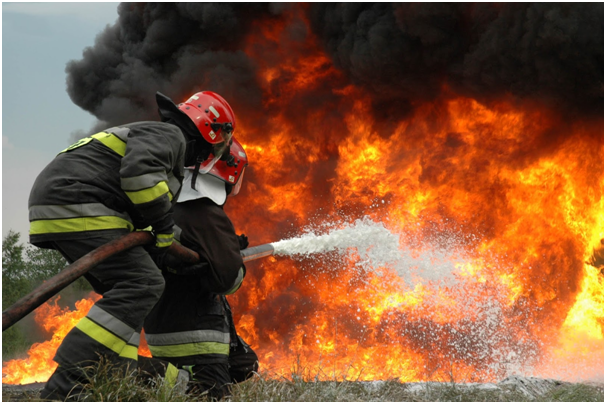Abstract
Fire-combating drill is carried out by the team assuming that fire is happened on board; in most cases, engine room drill is accomplished due to the high possibility of fireplace incidence. In widespread, fire-fighters try to extinguish the fireplace and if fail, the fixed fireplace extinguishing machine is operated. In this connection, the fireplace drill scenario is very critical now not handiest for improving the team’s fire-combating competency but also for hearth-combatants’ safety.
During the drill, the captain ought to determine fireplace-fighters’ entry and withdrawal. However, in most vessels, the time to withdraw from the fire scene isn't always indicated, however, the decisions are left to the hearth-opponents based totally at the air bottle’s low-pressure alarm.
In this study, for a simple have a look at on standardization of hearth-fighting drill scenarios, with the aid of the experiments at the Fire Safety training courses deliver with apprentice officers and analysis of deliver’s drawings, the time required for group assembling, the arrival time to fireplace scene, the time to wear fireplace fighter's outfit, the moving time of hearth-combatants in fireplace scene depending on the flat floor or the stairs, and the water strain in hearth hose had been considered.
Introduction
Ship fire injuries at sea cause big physical and personal damage. In particular, if the hearth can't be suppressed on the early stage, it directly connected to a massive human casualty, and the quantity of damage also be extended astronomically. You and Chung (2015) analyzed that astronomical belongings losses were recorded in the occasion of sinking because of a hearth of a large shipment deliver in evaluation with a small fishing boat or a barge. Such a massive-scale fireplace twist of fate on a deliver causes no longer handiest full-size physical harm however also human disaster.
In response to the prevalence of ship’s hearth, group members conduct a periodic fire-preventing drill. This is following the International Convention for the Safety of Life at Sea (hereinafter referred to as SOLAS) Reg. III/19.3, that fireplace drill has to be performed like a real emergency scenario and that all group members need to take part in fire drill as soon as a month. Besides, the International Safety Management Code (hereinafter called the ISM Code) calls for situations of fire-preventing drills for each vessel.
Accordingly, the Port State Control Officer in each u. S. requests fireplace-preventing drill to check the fame of implementation of SOLAS and ISM Code in the course of PSC inspection.
Status of fireplace-combating drill and related regulations
Statistics of engine room fireplace
Table 1 indicates domestic fire accidents on ships for all types of vessels and is classified according to the incidence location by way of the Fire Safety Training Abu Dhabi Tribunal’s judgment for six years from 2013, and the rate of the engine room hearth occurrence is the very best at approximately 61%1. According to the statistics, it is obtrusive that the engine room is the most probable region of the hearth, and this is the motive why the PSCOs basically request hearth-combating drill in the engine room.
A take a look at at the case evaluation of delivering fireplace injuries analyzed that the incidence of the fireplace inside the engine room has the highest hearth occurrence rate, and the engine fire spreads to the complete area due to the fact the engine room is one space and despite even neighborhood fire, it can unfold to the entire space of the engine room. Previous research related to ship’s fireplace
National Fire Service Academy defined that the air consumption according to a minute of human is as follows: 30–40 L/minutes all through the common work, 50–60 L/minutes for the duration of heavy work, and eighty L/minutes all through very excessive work (NFSA, 2017).
According to the instructions of the self-contained breathing apparatus this is being used within the real deliver, it can be used for about half-hour while used at an extent of 30–40 L/mins, and the to be had time can be significantly different depending at the physical condition and running environment.






0 Comments